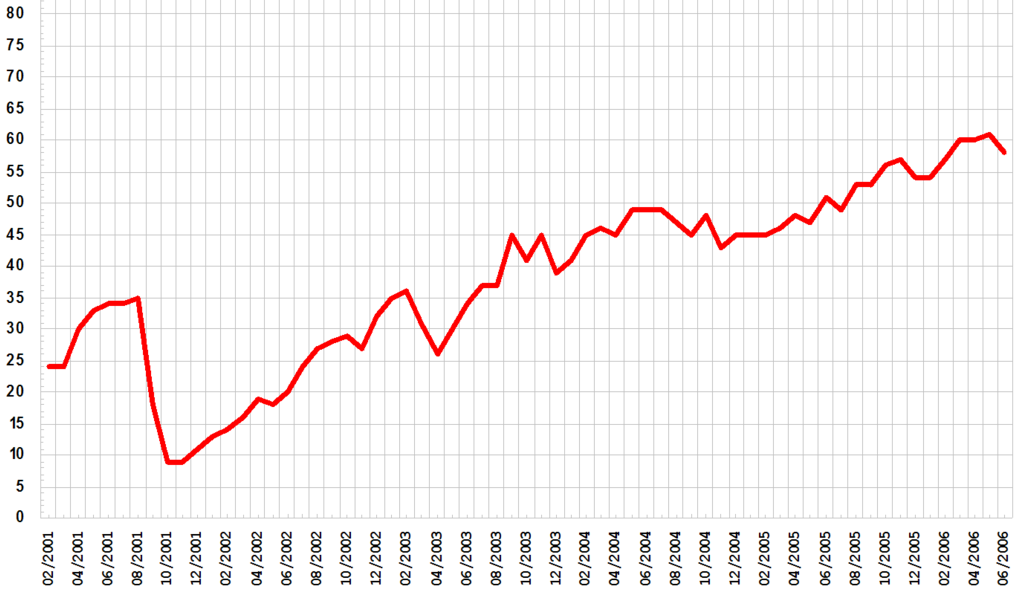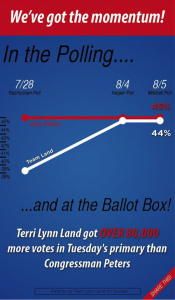As the battle for control of the Senate rages on, the American public grows eager for polling data to reveal which politician leads in a campaign and the likely outcome of each election. Given the people’s thirst for constant updates, many small, private polling firms hoping to capitalize on this demand for polling data have popped up, creating a polling cottage industry. Instead of elucidating the general population on the current state of affairs in various races, these new, small firms, attempting to satiate the public’s lust for more numbers, muddle the data with shoddy polling methods, allowing campaigns on both the left and right to capitalize on these inaccuracies for their own gain.
The proliferation of pollsters is evident in the coverage of the 2014 midterms. For example, in the entirety of the 2012 Michigan Senate race there were 41 polls from only 12 pollsters. Two years later, we are still two months out from the 2014 Michigan Senate election and there are already 37 polls from 20 pollsters on the election’s progress. The number of polls for this competitive race between Gary Peters and Terri Lynn Land will probably end up being similar to the 2012 figure of 41, but there has already been an increase of pollsters by nearly 70%. Similar statistics show up when looking at Georgia, a possible battleground state this November. In Georgia’s 2010 Senate race, there were 11 polls and 4 pollsters whereas this year, two months out from election day, there have been 21 polls from 13 pollsters. That is more than a 200% increase in pollsters, a statistic still likely to grow as the campaigns gruel on towards November 4th.
An increase in polling information and pollsters is not inherently bad. More data could potentially be educational to the American public and political campaigns. However, these polling firms are not contributing to the general pool of data in a positive way. They add meaningless numbers that do not supply citizens with any useful information. For instance, looking at the two aforementioned 2014 races in Michigan and Georgia, between the combined 58 polls that have been taken this year, only three had data that could actually be used to show definitively that one candidate is ahead of the other. Each of the other 55 polls had a margin of error and undecided voter percentage that combined was greater than the winning margin of the candidate that came out ahead of the other. Take for instance the July 27 poll for Georgia from Vox Populi Polling. It found that David Perdue, the Republican candidate, was 9 percentage points ahead of Michelle Nunn, the Democratic candidate. With a winning margin of 9 points, it sounds like Perdue has a fairly substantial lead on Nunn and should not be too concerned. However, the margin of error on this poll was about 4%, which means Perdue actually may only be 5 points ahead of Nunn instead of 9. In Perdue’s worst-case scenario, he would still maintain a lead. But there is another problem – in this poll, 10% of people surveyed were undecided. That means there is potential for Nunn to actually be ahead of Perdue by 5 points. So while a 9 point lead would normally sound secure, the large margin of error and undecided percentage makes the data communicated by this poll more of a tossup than information taken from a poll that has a larger sample size (and thus a smaller margin of error) and less uncertainty. These polls are about as helpful as a friend saying he will be at your house in two hours, give or take three.
The lack of clear and concise polling data could indicate that the races are very close and thus are hard to poll in general. But this is probably not the case. The Washington Post Election Lab has Perdue securing his Georgia Senate seat at 84% and Peters winning his Michigan Senate seat at 98%. Additionally, Fivethirtyeight.com has Georgia remaining red at 71% and Michigan staying blue at 78%, and New York Times has the numbers at 79% and 86%. Based on these high numbers, which are constructed from a plethora of factors, including demographics and fundraising, the multitude of polls from small polling firms really should not be showing that the races are tossups at all. The firms are falling short by failing to utilize large sample sizes or probability sampling, the bedrock of sampling that says all members of the population should have an equal chance of being chosen for the sample. These inaccuracies are caused by many reasons, including: a lack of funding, a willingness to put out information quickly, small sample sizes, copying other polling companies, and poor polling methods, such as robo-calls, which have a response rate in the single digits and leave out many cell phone users.
Given the pathetic state of polling, one might expect campaigns to be wary of the data and to avoid subpar data. Unfortunately, they are not. Campaigns are capitalizing on the influx of imprecise data to bolster fundraising, by using the faulty statistics to rouse their voter base. When there are polls that give a candidate the appearance of being a frontrunner, campaigns have no trouble broadcasting these results to bring in money. The candidate with a perceived lead generally raises more money and gets more airtime. Following the shoddy Vox Populi poll in Georgia, Perdue quickly put out this announcement on his Facebook page:
This photo serves to fire up Perdue’s base, even though it really has very little merit and fails to mention the large uncertainty presented by the poll. In Michigan, Terri Lynn Land posted on her Facebook page this photo:
This photo uses three different polls, which all have the same issues as the Georgia Vox Populi poll. Land would have Michigan voters believe the race is much closer than it actually is. These two photos combined had over 250 shares on Facebook.
Like Perdue and Land, several other senate candidates around the country from both parties are using imprecise polls to energize their voting bases. Though political campaigns are not the most honest of affairs, these candidates are exploiting meaningless data to help garner financial support. As the competition for senate control heats up, the cold hard data is quickly melting.


